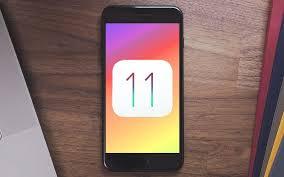IOS 11: Why The UX Needs Improvement?
 The final version of IOS 11 is expected to roll in September but what Apple has entailed the user with its Beta version to take the new upgrade on a test drive and get feedback on what looks good and what needs to be changed. Well, honest opinion that users and iPhone app development agency possess about the recently rolled out beta version is that some features are game changing and adorable, but some will take the time to adjust with or get used to it. Well, in-depth coverage of the IOS 11 feature is something that I have already covered so we can directly move on to the review where I would like to share the good, the bad and the ugly side of what I have discovered with the Beta version.
The final version of IOS 11 is expected to roll in September but what Apple has entailed the user with its Beta version to take the new upgrade on a test drive and get feedback on what looks good and what needs to be changed. Well, honest opinion that users and iPhone app development agency possess about the recently rolled out beta version is that some features are game changing and adorable, but some will take the time to adjust with or get used to it. Well, in-depth coverage of the IOS 11 feature is something that I have already covered so we can directly move on to the review where I would like to share the good, the bad and the ugly side of what I have discovered with the Beta version. 
1) Files
Files that too with iCloud results in working like you expect any of the file management apps to work. Well, what went wrong is that Apple entails only 5GB of free storage with the iCloud which is shared between IOS device backups, files and other Apple centric data which unfortunately won’t go much farther. To make optimum utilization of the app, online storage providers should come up with new apps which can conjoin adequately with the API of the files and then we can consider Files as the most useful app.
2) The Dock
Apple has intended to create the Dock more like Windows 10 Taskbar or MacOS Dock. Apple’s Dock is more like a Microsoft version where certain apps are at one end, which is permanently used while others are at the other end showing the apps that are currently used. The number of apps can be drag and drop from one end to another making the app icon to shrink as the number of apps increases. In the previous version, the size of icon remained stagnant, unlike this version. What the annoying part is the active apps that keep on mutating also incorporates apps from iPhone and Mac due to the handover function of Apple which makes it possible to initiate something on one device and then continue same on the another.
The dock is not limited to be seen just from the home screen, but can also be seen from any screen now by flicking it from the bottom edge of the phone’s display. In the case of IOS 10, by doing so, you can access the control center. Hence, it would be a trouble for the users as they have to flick up twice. The first time flicking will open dock and the second one will open the control center.
3) Multi-tasking
This feature was in buzz when IOS 11 was announced at the WWDC 2017. With slide over feature, the mobile app will be appearing as a floating window and with split view, two apps will appear side by side dividing the screen. Well, none of them is as good as the buzz. Well, this is just the Beta version and not the final one. Hope that this feature is still in work in progress and the final one would not be this disappointing. The split view is recommendable, but just in the device with a big screen. Small screen device will look cluttered with this feature.
4) UX trouble
The UX trouble is not something specifically related to this recent upgrade, it’s like inbuilt with every previous version of IOS. Keeping aside the entire boom and buzz of Apple, if taking into consideration as a general device, UX of IOS is even more complicated than before instead of making it simple and easy to use for the users. Let’s take the simple illustration of the dock, For using split view option and access two apps conjointly, you will have to flick it from the bottom to get the dock. Now, the dock has numerous app icons which keep on altering dynamically based on the tasks you are doing. To access the split screen mode, you will have to drag the icon to the edge of the screen. To go from split screen to slide over toggling the app and flicking down from the top is all you need to do. Well, if by mistake you flick from the top instead of the bottom, you will open the notification bar.
To entail the user with new features, Apple has indeed made the UX more complicated with so many options like tap, hold, flick, double flick, drag, and drop. Users can really pull their hair out in confusion when they want to do something and they end up doing something else.
5) killing useless apps
Plenty of mobile apps run in the background of which you are not in the know of. With IOS 10, killing these apps was easier, you just need to double click the home button and flick an app upwards and get rid of it. If an app misbehaves, it’s this simple to kill it. With this new version, to kill an app, you will have to double click the home button which will display all the running apps in the tile form. For getting rid of the app, you will have to tap and hold the app which will bring the app to display and show a cross button on the top left corner which you will have to click for killing the app.
Advertise on APSense
This advertising space is available.
Post Your Ad Here
Post Your Ad Here





Comments